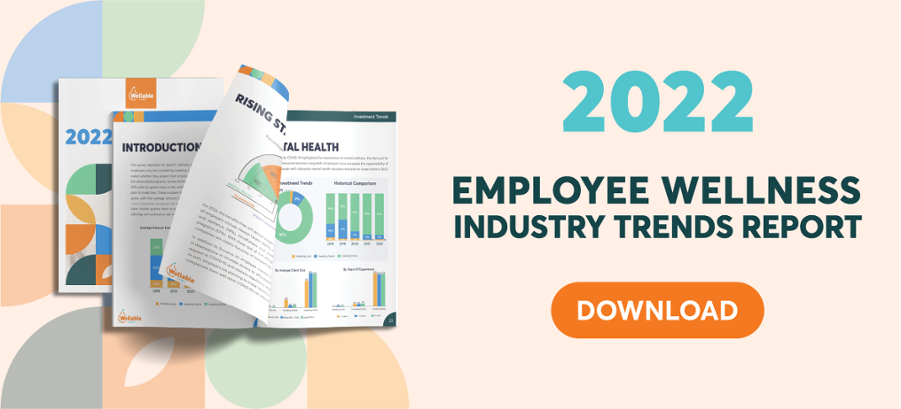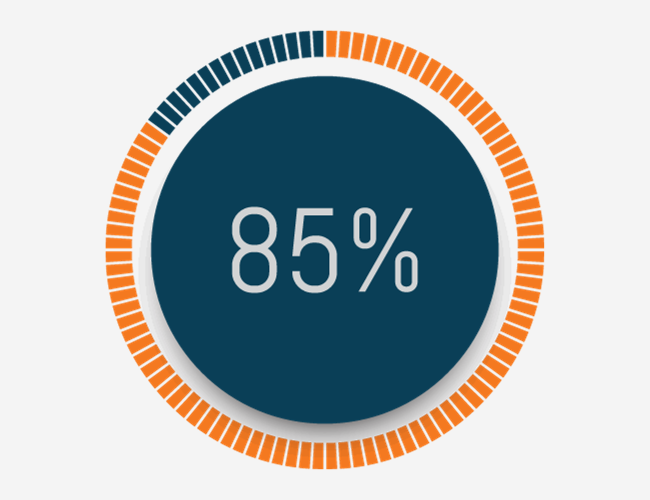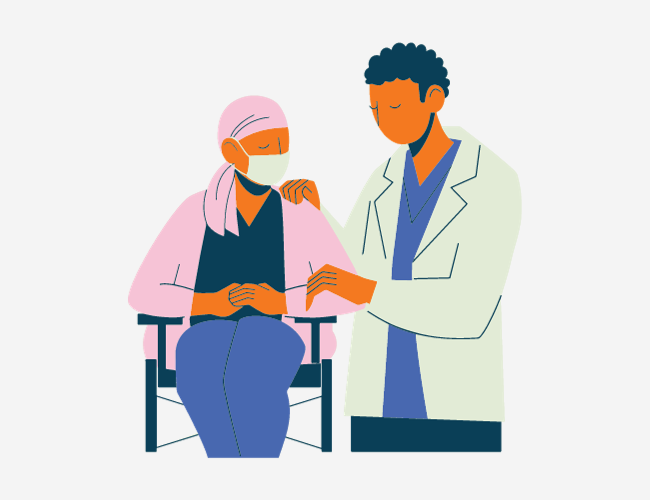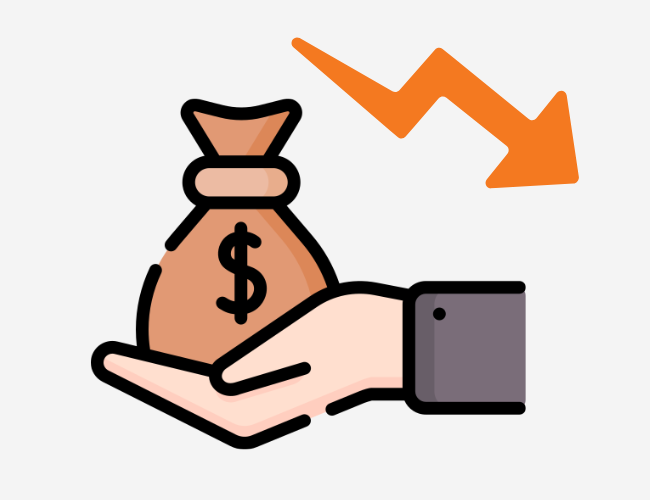A study from Deloitte Health Solutions describes the U.S. health system as the “Wild West” that is comprised of four types of unique consumers, each of which possesses unique characteristics and propensities to engage with healthcare technology. Although the report focuses on patients, the segmentation analysis provided in the report helps health care stakeholders understand attitudes and behaviors to attract, retain, and engage consumers. Since most patients are employees, companies can and should use the paradigm as a way to think about optimizing engagement in and impact of employee wellness programs.
The analysis categorized individuals into four distinct groups based on differences in preferences for managing their health and interacting with various health care stakeholders. Below are the four categories and characteristics of individuals in each one.
Trailblazers
Trailblazers, which account for 16% of consumers, are the youngest of the four segments but are in the highest income group. They are tech-savvy, self-directed, and engaged in wellness, which may partially explain why they are most likely to be in excellent health. They are also most willing to share tracked health information with their physician (perhaps with their employer as well). There are more men than women in this group.
Prospectors
Prospectors, which account for nearly a third (30%) of consumers, are the second youngest group as well as in the second highest income group. Unlike the early adoption characteristics of Trailblazers, they rely on recommendations from friends/family use providers as trusted advisors. They are willing to use technology and share the data with a physician, but this behavior is likely to be influenced by others. They are in the middle of the pack when it comes to health behaviors. There is an equal split of men and women in this group.
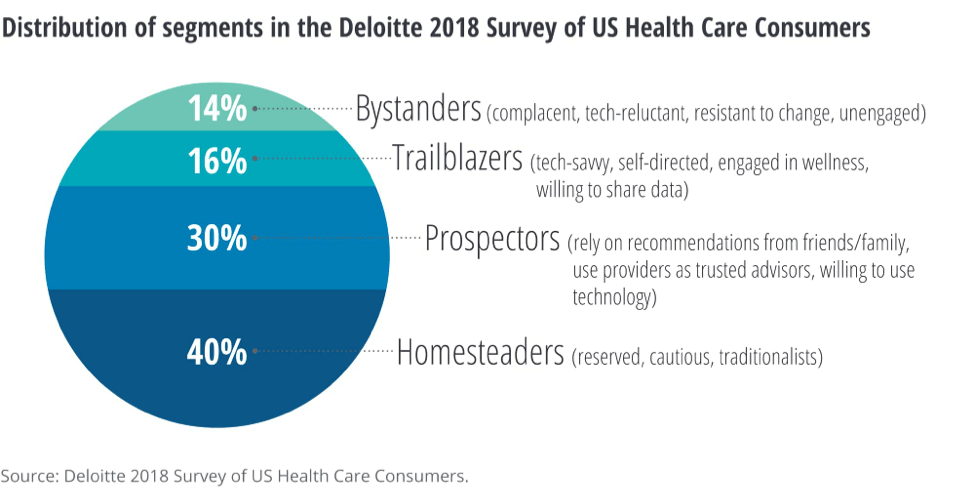
Homesteaders
Homesteaders, the largest of the four categories, comprise 40% of consumers. They are the second oldest group as well as in the second lowest income group. They are reserved, cautious traditionalists that are less likely to share health data with a physician and the least willing to share EHR or wearable data with any organization. They are close to average when it comes to following a healthy diet or engaging in healthy behaviors. There are more women than men in this group.
Bystanders
Bystanders, the smallest of the four categories, comprise only 14% of consumers. They are the oldest group as well as in the lowest income group. They are complacent, tech-reluctant, resistant to change, and unengaged. They are least likely to share health data with a physician, which is a concern as the group that least adheres to healthy behaviors. There are more women than men in this group.
Based on the characteristics of the categories, one thing is clear: age and income are correlated with propensity to engage in healthy behaviors and willingness to track and share health data. Regardless, employers must engage all employees in order to deliver a successful wellness program. To do this, employers must build employee wellness programs that are multi-faceted and cater to different levels of technology fluency and willingness to share data (there is no one-size-fits-all solution!).
For example, a technology-centric program with integrations to popular consumer apps and devices (Fitbit, MyFitnessPal, etc.) would be ideal for a Trailblazer while more traditional, lower-tech solutions, such as health coaching or onsite seminars, would better suite a Bystander. Employers should also consider the demographics of their eligible participants. A company with younger, higher income employees may feel comfortable focusing on technology solutions since it caters to a significant portion of their population.
The study surveyed 4,530 U.S. consumers to assess their attitudes, behaviors, and preferences when making decisions about health care and health insurance.



